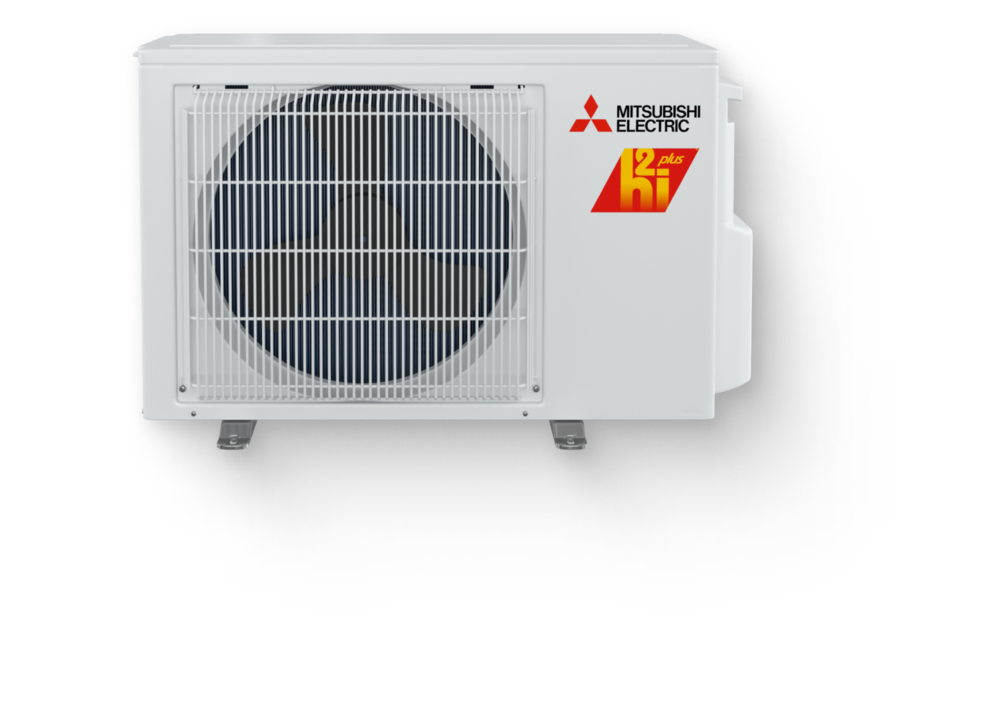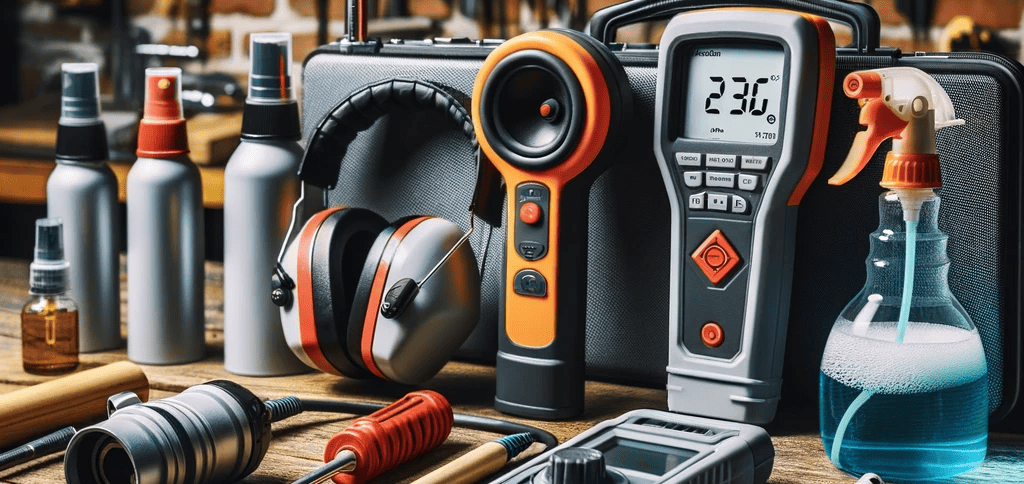Discover How to Efficiently Find a Leak in Your Mini Split System!
A Mini Split System, commonly known as a ductless system, is a staple in many homes and commercial spaces, offering an efficient solution to heating and cooling needs. Its compact design and flexible installation options make it a preferred choice among many. However, like any other HVAC system, a Mini Split can also face issues like refrigerant leaks which can impair its efficiency and enhance the quality of comfort it provides. Common signs of how to find a refrigerant leak in mini split system may include reduced cooling or heating efficiency, unusual noises, or even visible refrigerant pooling. This guide aims to provide a thorough understanding of how to detect leaks in a Mini Split System to ensure it continues to function optimally.
Table of Contents:

Leak in a Mini Split System
Understanding the common causes of air leaks in your Mini Split System is essential for maintaining its functionality and longevity
Understanding the Common Causes of Leaks
Understanding the common causes of air leaks in your Mini Split System is essential for maintaining its functionality and longevity. One of the less common but significant causes is manufacturing defects. These defects might occur during the production process in the coil or refrigerant lines and can lead to leaks. Fortunately, they are often covered under the manufacturer's warranty, so it's advisable to check the warranty terms if you suspect such an issue.
Another factor that contributes to leaks over time is wear and tear. The continuous vibrations from the running system, coupled with aging components and various environmental conditions, can lead to the natural degradation of parts. This degradation may result in leaks in the refrigerant lines or coils. To combat this, regular maintenance and timely repairs are crucial. They help in mitigating the effects of wear and tear and ensure that your system operates efficiently for a more extended period. Improper installation is also a critical cause of leaks. It highlights the importance of entrusting the installation to a reputable and experienced technician. Professional installation not only guarantees optimal performance but also reduces the likelihood of leaks and other related problems. Lastly, physical damage, whether from impacts or mishandling during maintenance, can lead to leaks. Exercising caution while moving or working around your Mini Split System is essential to prevent any unnecessary damage that might result in leaks.
INTERESTED IN RELIABLE SERVICE
SCHEDULE SERVICE CALL TODAY!
Mitsubishi award-winning Diamond Contractor
Serving New York and New Jersey

Preliminary Inspection
When suspecting leaks in your Mini Split System, conducting a preliminary inspection can be invaluable in early detection and swift resolution. The first step in this process is a visual inspection, which is straightforward and can be performed by anyone. During this inspection , you should look around the unit for any obvious signs of damage or indications of refrigerant leaks. Pay special attention to signs such as refrigerant pooling or oily residues around the system, as these often point to a leak.
Another essential aspect of the preliminary inspection involves listening for unusual noises while the system is operational. A hissing or bubbling sound, in particular after a few seconds, could indicate a refrigerant leak. Carefully listen for any such noises emanating from both the indoor and outdoor units of the system. These sounds are typically clear indications of a refrigerant leak, and identifying where the noise is coming from can help pinpoint the exact location of the leak. Lastly, it's crucial to monitor the system's performance and your electricity bills. Performance issues such as a decline in cooling or heating efficiency or an unexpected increase in energy costs might signal a leak. Keeping a close eye on how your system operates and any anomalies in your energy bills can provide early warnings of potential issues, including leaks. By combining these inspection methods—visual checks, listening for unusual sounds, and monitoring performance—you can effectively conduct a preliminary inspection to identify potential leaks in your Mini Split System.

Tools for Detecting Leaks
In the realm of detecting leaks in your system, various tools and methods to measurte the effectiveness are available, depending on your settings, each offering its unique advantages. Among these, electronic leak detectors stand out as specialized and highly efficient instruments. These detectors are incredibly sensitive and capable of identifying even the smallest of leaks with relative ease. For those who suspect a leak in their system, investing in a good quality electronic leak detector unit or opting to rent one from a local HVAC supply store can be a wise and practical decision.
Another widely used technique by professionals is the UV dye method. This approach involves injecting a special dye into the refrigerant system. As the dye circulates with the refrigerant, it becomes visible under UV light, making it easier to spot any leaks. This method is not only effective but also provides a clear visual indication of where the leaks are occurring. Alternatively, for those looking for a more straightforward and cost-effective method, the soap bubble solution comes in handy. By applying a soap bubble solution to areas suspected of having leaks and observing for bubble formation, one can easily pinpoint leak locations. This method is particularly appealing for individuals who might not have access to more specialized tools. For a more advanced approach, infrared cameras offer a unique solution. These cameras are designed to detect temperature discrepancies around the system. They provide visual images showing temperature variations, data which can be invaluable in spotting leaks. Infrared cameras allow for a more comprehensive and detailed inspection, making them an excellent tool for identifying leaks that might not be easily detected through other methods. By choosing the right tool or combination of tools, from electronic detectors and UV dyes to soap solutions and infrared cameras, you can effectively and accurately identify leaks in your system.
Professional Leak Detection
When it comes to leak detection in your Mini Split System, opting for professional inspection offers numerous benefits. Professional leak detection services bring a wealth of expertise and specialized equipment, services are used in ensuring the accurate and efficient detection and repair of leaks. This approach can save you both time and money in the long run by identifying and addressing leaks promptly and effectively. Moreover, professionals are equipped to handle complex situations that might be beyond the scope of DIY solutions. During a professional leak detection service, you can expect a thorough and comprehensive examination of your system. Technicians typically conduct various tests, including pressure tests and electronic detection, to accurately pinpoint leaks. Following the detection process, they will provide expert recommendations for repairs, ensuring that your system is restored to optimal working condition. This level of detailed inspection and tailored repair plans underscores the value of professional involvement in maintaining the integrity and quality of those services in your Mini Split System.
When it comes to repairing and preventing future leaks, the role of professional repairs cannot be overstated. Having qualified technicians conduct repairs is crucial for preventing further issues. Professional repairs ensure that the job is done correctly and safely, thereby maintaining the integrity and efficiency of your system. Alongside professional repairs, routine maintenance plays a pivotal role in preventing future leaks. Regular leak check-ups by professional technicians can identify potential issues before they escalate into major problems develop and improve new one, ultimately saving you from costly repairs down the line.
For those interested in DIY repairs, it's important to ensure you have the necessary knowledge, tools, and understanding of the risks involved. While certain minor repairs can be tackled on your own experience to be age, it's advisable to seek professional assistance for more complex issues, especially when dealing with air and refrigerant leaks. In summary, a combination of professional expertise, routine maintenance, and informed DIY precautions forms a comprehensive approach to managing, repairing, and preventing leaks in your Mini Split System.
INTERESTED IN RELIABLE SERVICE
SCHEDULE SERVICE CALL TODAY!
Mitsubishi award-winning Diamond Contractor
Serving New York and New Jersey

Conclusion
Timely leak detection and repair are paramount in maintaining the efficiency and longevity of ac system in your Mini Split System. While preliminary inspections and some DIY methods can provide temporary solutions, professional assistance is highly recommended for accurate diagnosis and repair. Following the guidelines provided in this article will equip you with the necessary knowledge to tackle leaks in your Mini Split System, ensuring a comfortable and efficient climate control solution for viewing and your location and space.
Back Home - Richair Comfort Solution - Ductless Mini Split Systems Top Quality Installations and Professional Service.
Was This Article Helpful?
RECENT POSTS

